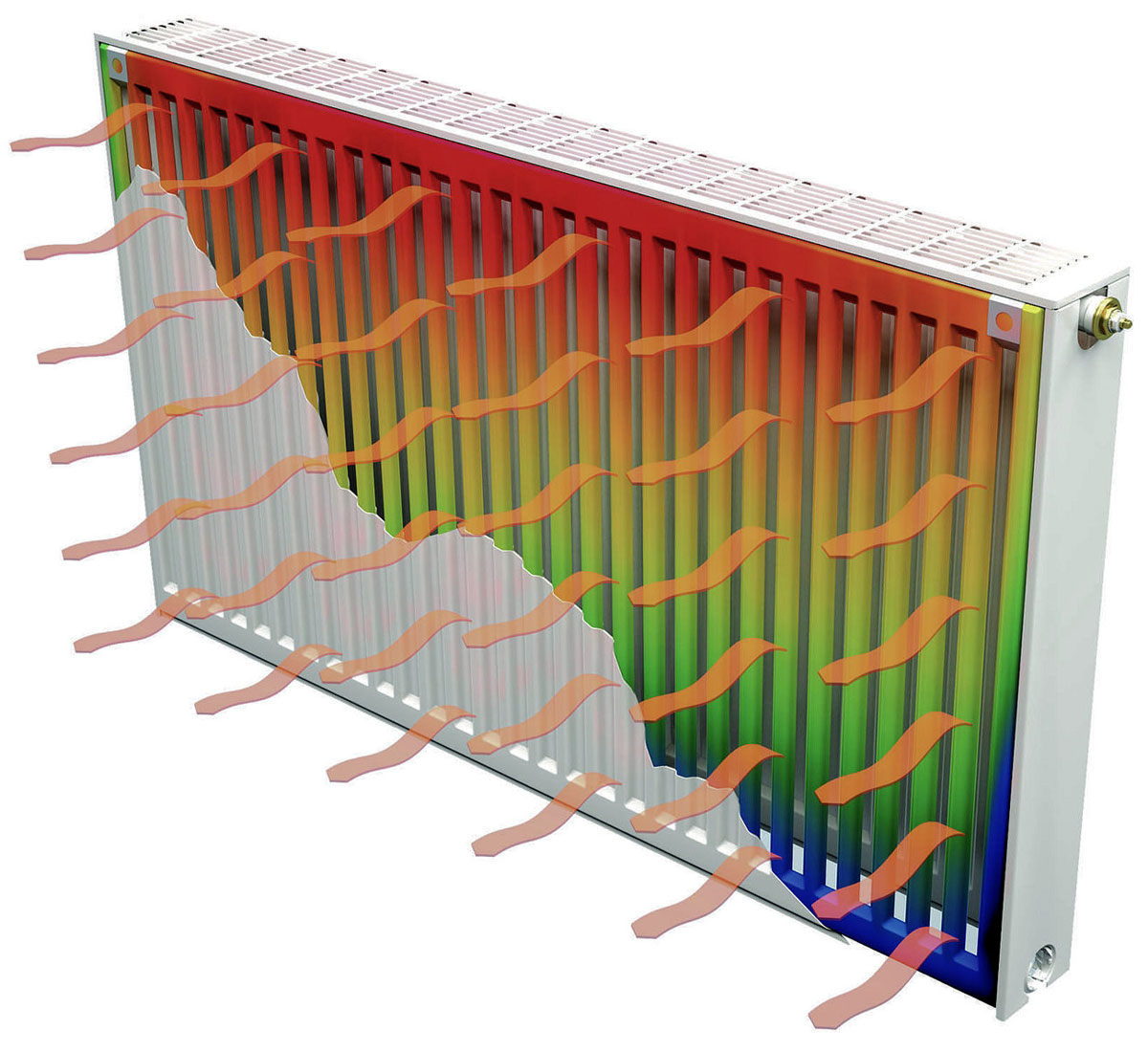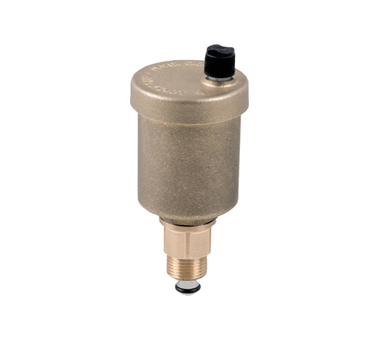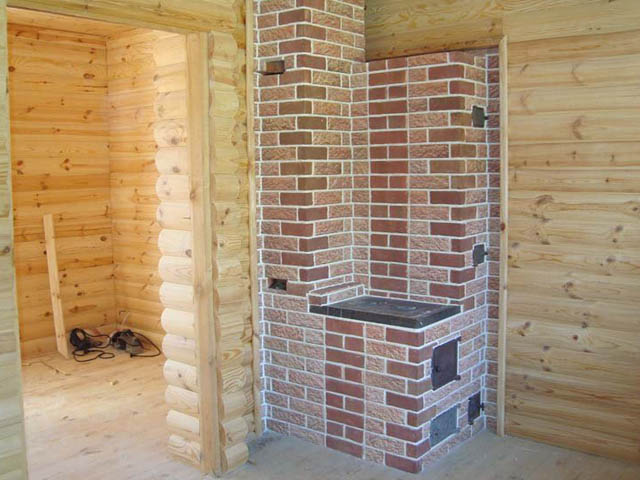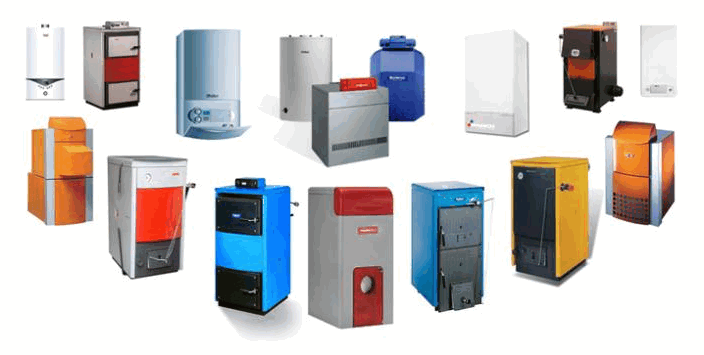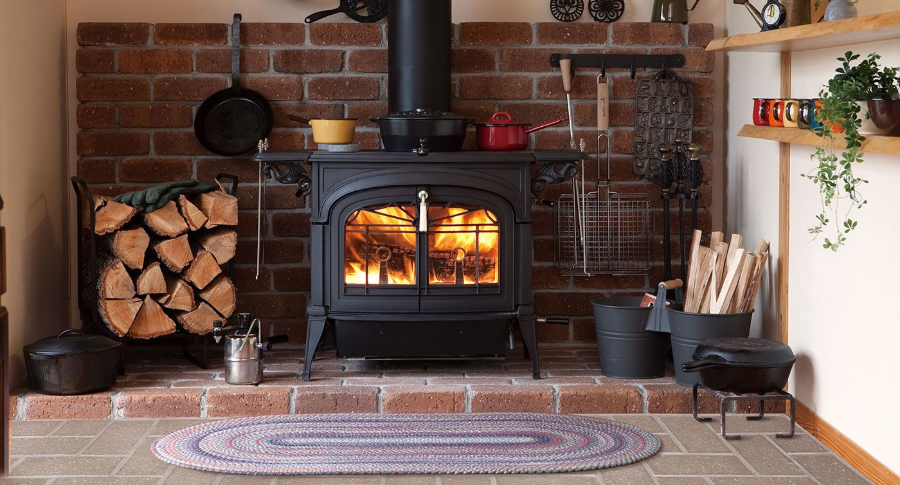The technology of installing a floor heating system in a private house or apartment requires preliminary thermal insulation of the base. To maintain a comfortable room temperature with minimal heating costs, it is recommended to use foil-clad materials. The metal layer reflects infrared radiation, reducing its loss by up to 3-10%. Such a substrate is indispensable when installing an electric underfloor heating.
The main characteristics of the material
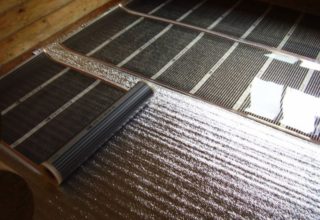
Foil backing is a multi-layer material. The base of the insulation can be mineral wool, expanded polystyrene or foamed polyethylene or polypropylene. The base layer provides heat and sound insulation properties of the material. Foil for underfloor heating serves as a reflector of infrared waves. The metallized surface reduces heat loss and prevents the penetration of water vapor.
Main characteristics of the foil backing:
- reflectivity;
- moisture resistance;
- elasticity;
- durability;
- excellent vapor barrier properties;
- light weight;
- insulation.
The effectiveness of reflective insulation depends on the thickness of the aluminum layer. A sputtering of 12-15 microns transmits radiation without performing its function. High-quality foil should be applied with a layer of 30-50 microns.
Another significant criterion is the thickness of the insulation. There are materials from 2 to 10 mm. The floor level in the room will rise to such a height. To save space, choose a substrate of no more than 5 mm.
The need to use a foil substrate
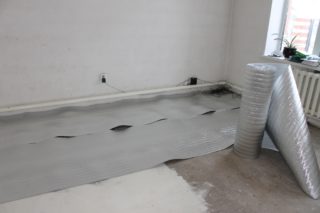
Experts in the installation of underfloor heating systems unanimously confirm the need to install underlays. An insulating layer prevents energy losses through the concrete screed layer. Low coefficient of thermal conductivity ensures the structure of the material. Closed cells of synthetic fabrics, filled with air, and randomly laid mineral wool fibers are reliable heat insulators.
Foil under floor heating is used as reflective insulation. The metallized layer promotes uniform heating of the room. The large area of coverage that directs infrared radiation into the room allows you to save up to 97% of energy. The use of underlays reduces heating time and heating costs. The function of the material is also to protect the heating elements from moisture entering through the base.
When choosing a substrate, the type of underfloor heating and the finishing flooring are taken into account. For the water floor system, choose a rigid insulation that can withstand high loads. Consideration should be given to the aggressiveness of the concrete screed with which the pipes are poured. The substrate must have a protective coating. The version with heating resistive or self-regulating cable can be installed under an adhesive solution that does not harm the aluminum foil. For such a system, a foil underfloor heating underlay is the best choice.
One of the types of electric underfloor heating is heating mats. These are wires laid according to the scheme and fixed on a fiberglass base. A backing with an aluminum reflective surface is effective for them as well.Infrared film mats placed under laminate, parquet or carpet can overheat the foil, causing a short circuit. For IR films, a metallized mylar-coated substrate is recommended.
Features of underfloor heating
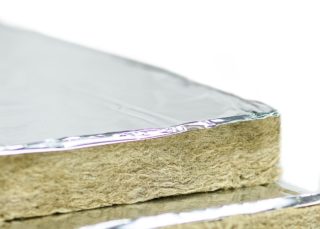
Substrate specifications depend on the type of base coat:
- Mineral wool. Insulation is sold in the form of rigid slabs or mats. Its advantages: fire safety and low thermal conductivity. Thickness from 20 to 100 mm. A significant drawback of mineral wool is phenolic compounds used to hold the fibers together. When heated, harmful substances are released. The underlay is not suitable for a water floor; if it leaks slightly, it loses its insulating properties. Popular brands with a minimum content of organic binders: Rockwool, Paroc, Izover.
- Extruded polystyrene foam with a foil layer. The substrate is produced in the form of mats of small thickness (about 20 mm). It has chemical and biological resistance and serves as additional waterproofing. The material is designed for temperatures from -180 to + 180 ° C.
- Foamed polyethylene - insulation is characterized by minimal heat and vapor permeability. To improve its properties, it is laminated with foil. Elastic elastic material smooths out unevenness of the base well. It is environmentally friendly and designed for long-term operation.
Substrates vary significantly in price. The most available are mineral wool and foamed polyethylene. The expensive options include multifil and foilisolone.
DIY foil laying technology
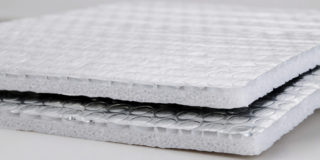
Work with rolls of reflective insulation is available for the home craftsman. Installation of the material does not require special tools and knowledge. Required:
- roulette;
- scissors;
- aluminum tape.
The process of laying the lining begins after leveling and waterproofing the base. Cracks and recesses in the concrete screed are covered with mortar. Bitumen mastic or liquid glass is used as a moisture insulator. Special glue is required to fix the backing.
They are mounted on a wooden floor immediately after cleaning the coating. The best option is to buy material on a self-adhesive base. If there is no sticky layer, then use double-sided tape. The material is cut to fit the area of the room. Separate parts are joined without overlap, placed close to the walls. The canvases are laid with a heat-reflecting coating facing up. The seams between the stripes are closed with metallized tape. The procedure ensures the tightness of the overall coating. The underfloor heating system is being installed on the substrate. After checking it, the finishing flooring is laid.
Popular brands of foil substrates
Materials based on foamed polymers are in the greatest demand among buyers.
Folgizolone

The IZOLON trademark offers thermal insulation made of foamed polyethylene. The material has a closed cellular structure. By applying a layer of foil or metallized film, the insulation reflects up to 97% of infrared waves. There are two types of material available:
- Cross-linked polyethylene foam - the canvas has excellent thermal insulation characteristics and a long service life.
- Uncrosslinked polyethylene foam - the product is inferior in strength to its analog, but it is cheaper.
The thermal conductivity of foil-insol is 0.036 W / (m * K), the operating temperature is up to 100 ° C, and the water absorption is less than 1%. Thermal insulation on the floor with foil insulation gives a high-quality substrate that is not afraid of moisture and dynamic loads. The products are manufactured in rolls 1 m wide, 25 and 50 m long. Installation of steam and sound insulation is not required.
Ecofol
Soft and elastic insulation is made of foamed polyethylene, duplicated with a layer of metallized film. There are two types of product:
- Ekofol A - heat insulator with a layer of metallized lavsan film;
- Ekofol S - the canvas on one side is covered with foil, and on the other with a self-adhesive layer.
The material is suitable for all underfloor heating systems. In terms of insulating characteristics, it replaces 15 cm of brickwork or 45 mm of wood. Ekofol is resistant to moisture and aggressive environment. The thickness of the roll cloth is from 2 to 10 mm. One of the advantages of the product is that it comes with ready-made markings for laying heating elements.
Penofol
An inexpensive and reliable floor heat insulator consists of several layers. It is based on closed cell polyethylene foam. The reflective properties of the material are given by a foil coating. The metallized layer is located on one or both sides. The aluminum coating is 13-30 microns thick, and the blade is 2-40 mm thick. Due to its low vapor permeability, Penofol excludes the penetration of moisture under the substrate. The material is environmentally friendly, does not rot, weakly supports combustion. The light weight makes it easy to transport and install.
Multi-foil
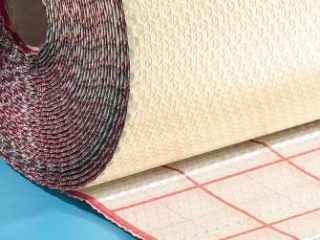
Uponor manufactures a multi-layer product with reflective properties. It serves not only for thermal insulation, but also has sound and waterproofing characteristics. The base layer of multifoil for underfloor heating is polyethylene with closed air-filled cells filled with air. The surface of the insulation is covered with a foil of a smooth or embossed structure. Rolls width 100 cm, length 60 m, thickness 4 mm. The metallized layer is marked with a 50 × 50 mm pitch.
Penoterm
The products of the Russian brand are suitable as a substrate for electric and water heated floors. It consists of a foamed polymer and a metallized lavsan film. The material acts as a heater and sound insulator. Penotrem is easy to cut and assemble. Its surface reflects 80% of infrared radiation. The thermal conductivity of the material is 0.034, the working temperature is from -40 to 150 ° C.
The underlay with a foil layer is an essential part of the underfloor heating system. Its use increases the overall heating efficiency and reduces energy losses.

